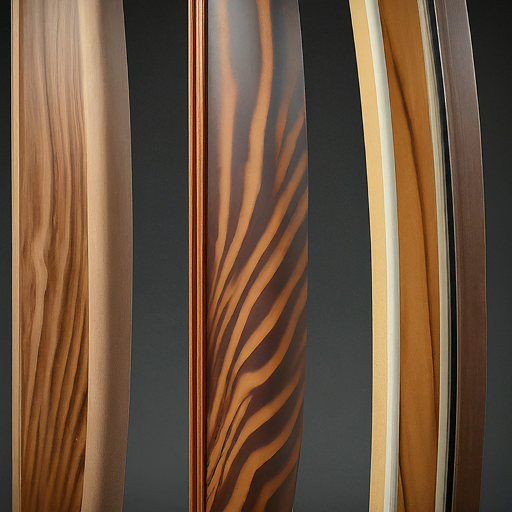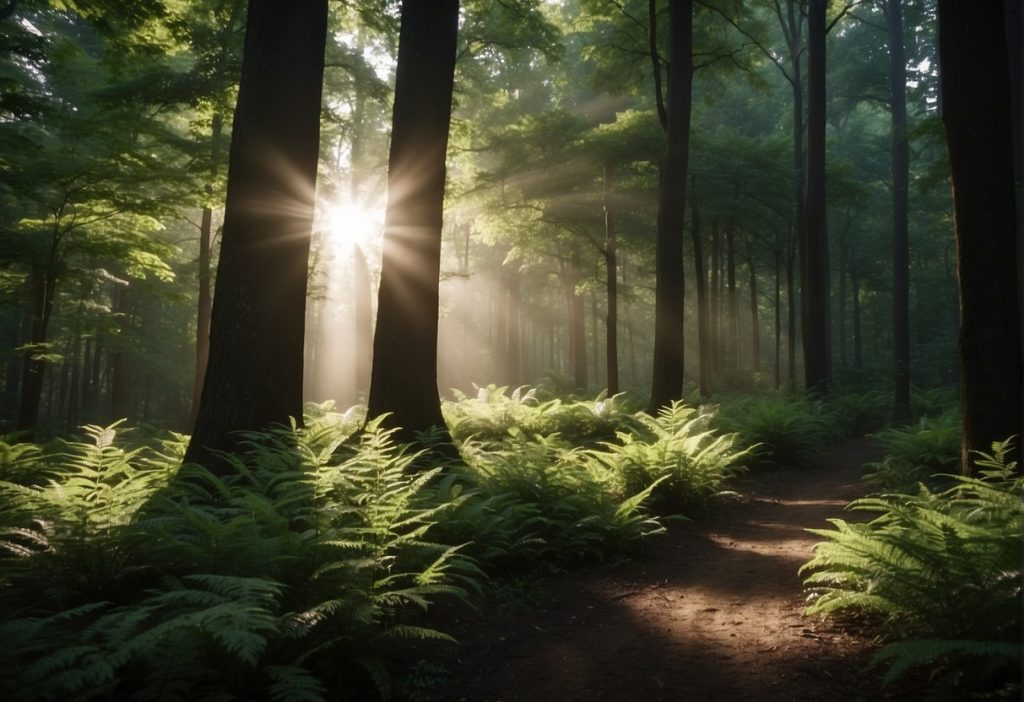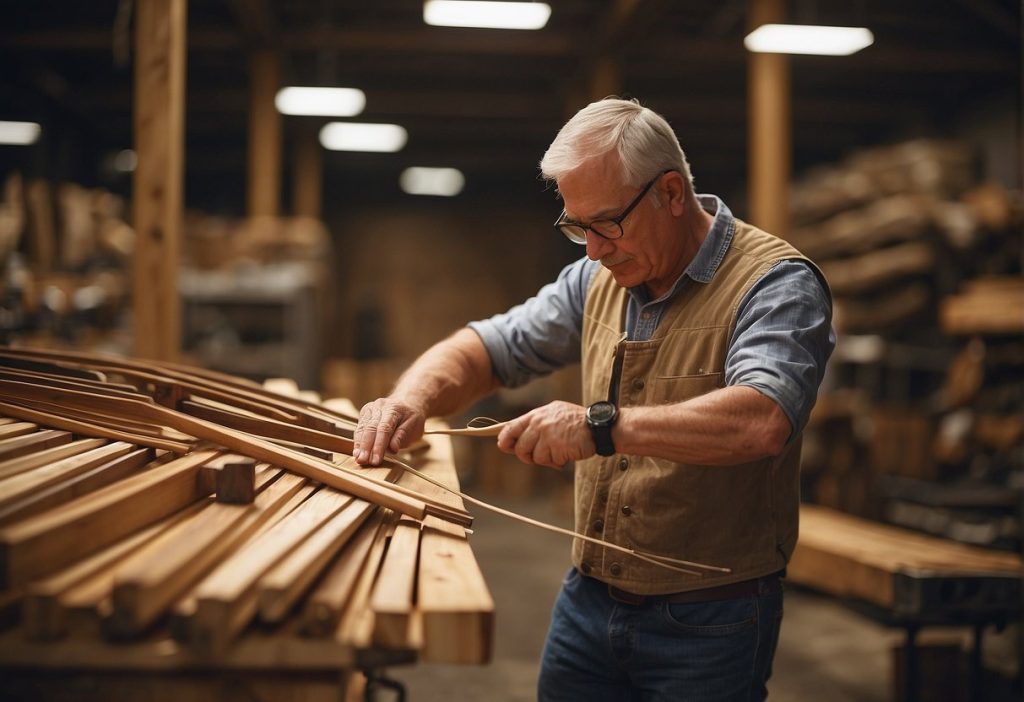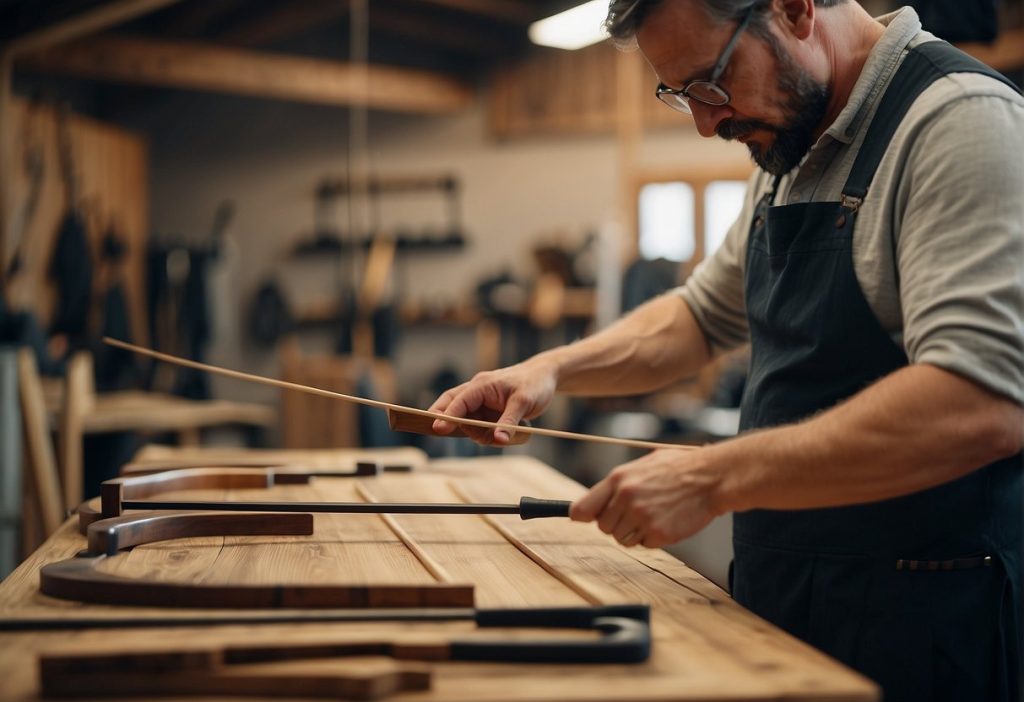
Recurve bows have been a popular choice among archery enthusiasts for their elegant design and efficient performance. One crucial aspect of these bows is the type of wood used in their construction. The right wood can enhance the overall shooting experience by providing the perfect balance, strength, and flexibility.
Various types of wood are suitable for making recurve bows, with each having its unique characteristics and benefits. Some popular options include maple and hickory, osage orange, bamboo, red oak, and ipe, among others. These woods offer different properties concerning durability, flexibility, and overall performance to cater to individual preferences and skill levels.
In this article, we will explore the best wood options for recurve bows, diving into their unique attributes and discussing the role they play in crafting the ideal recurve bow for your archery needs. Choosing the right wood not only ensures your bow performs impressively but also ties in with the rich history of the sport and showcases your dedication to precision.
Understanding Recurve Bows
Terminology
A recurve bow is a type of traditional bow that has limbs that curve away from you when unstrung. Understanding the terminology for recurve bows can help you become more familiar with this type of archery equipment. Here are some essential terms:
- Limbs: the two flexible arms of the bow, which store energy when the bow is drawn.
- Riser: the central part of the bow connecting the limbs, where you grip the bow.
- String: the cord that connects the tips of the limbs and is pulled back when drawing the bow.
- Nocking point: the location on the string where the arrow sits when ready to shoot.
Design and Function
In comparison to other types of bows, such as the longbow and the compound bow, the recurve bow offers a unique balance of features. The curved limbs provide greater speed and accuracy than a longbow but require less maintenance and setup than a compound bow. The construction of recurve bows can vary, incorporating modern materials like fiberglass and carbon for enhanced performance.
Recurve bows serve multiple purposes in archery, such as:
- Target shooting: used in Olympic archery events, emphasizing precision and consistency.
- Hunting: lightweight and maneuverable, recurve bows are a popular choice for hunters who prefer traditional equipment.
- Traditional archery: many archers appreciate the simplicity and history behind recurve bows, connecting them to the origins of the sport.
Overall, choosing a recurve bow involves understanding its design, features, and applications. As you gain more experience and knowledge, you’ll be better equipped to decide if a recurve bow is the right choice for your archery pursuits.
Characteristics of Bow Woods

Strength and Elasticity
The best wood for recurve bows must possess both strength and elasticity. Strength is crucial to withstand the strain of repeated use, while elasticity allows the bow to bend without breaking. Some of the most suitable wood species for recurve bows include maple, oak, hickory, and elm.
A crucial factor to consider is the modulus of elasticity (MOE) and the modulus of rupture (MOR) for each wood species. The best bow woods tend to have a low MOE (easier to bend) and a high MOR (less likely to break). For instance, yew and osage orange are known for their impressive balance of strength and elasticity.
Here are some popular woods for recurve bows and their corresponding MOE and MOR values:
| Wood Species | Modulus of Elasticity | Modulus of Rupture |
|---|---|---|
| Maple | Low | High |
| Oak | Low | High |
| Hickory | Low | High |
| Elm | Low | High |
Durability and Straight Grain
In addition to strength and elasticity, durability is essential in a recurve bow. Look for wood species that resist decay and withstand the elements; suitable options include bamboo, dogwood, red oak, ipe, and ash. Recurve bows made from these durable woods have longer lifespans compared to those made with less resistant materials.
Straight grain is another critical characteristic for bow woods, as it prevents twisting and promotes the bow’s performance. Misaligned grain can cause the bow to warp and weaken over time, resulting in decreased accuracy and potential breakage. Some wood species known for their straight grain include hard maple, white oak, and Japanese yew.
When crafting your recurve bow, pay keen attention to the chosen wood’s characteristics, including strength, elasticity, durability, and straight grain. These can significantly impact your bow’s performance and longevity, ensuring you have a reliable and enjoyable archery experience.
Selecting the Right Wood for Recurve Bows

Assessing Wood Quality and Suitability
When choosing the right wood for your recurve bow, there are several factors to consider. First, you should look for a wood with a straight grain, as this affects the bow’s durability and performance. Wood with knots or irregular grain patterns can compromise the bow’s strength and should be avoided.
Value and affordability also play a role in your decision, especially if you’re a beginner. It’s essential to strike a balance between price and quality, ensuring that you receive a durable, high-performance bow without breaking the bank.
Popular Choices Among Bow Makers
Many types of wood are favored for their properties and usage in recurve bows. Here’s a list of popular woods for recurve bows, with a brief overview:
- Hickory Wood: Known for its toughness and resilience, hickory is an excellent choice for beginners. The wood’s strength and shock resistance make it suitable for bows with high draw weight. Hickory is affordable and offers good performance and durability.
- Eastern Redcedar: Eastern redcedar is a lightweight softwood, making it easier to work with than some hardwoods. However, its lesser strength requires reinforcement, often by laminating the bow with a stronger wood like hickory.
- Osage Orange: Widely regarded as an excellent bow wood, osage orange has remarkable strength, elasticity, and natural resistance to rot and decay. Though it can be more expensive than some other options, osage orange offers excellent performance.
- Black Locust: Similar in characteristics to osage orange, black locust is dense, strong, and durable. It’s an affordable alternative for those looking for high-quality wood without the higher price tag.
- Lemonwood: With its high strength and elasticity, lemonwood is another popular choice among bow makers. Lemonwood’s fine, straight grain ensures that the bow’s power is transferred efficiently to the arrow, making it a desirable option for archery enthusiasts.
- Red Oak and Maple: These hardwoods are durable, readily available, and considered among the best woods for recurve bows. Both red oak and maple are common choices for bow making, and they are often used for the core or backing of the bow.
Remember that selecting the right wood for your recurve bow is a crucial step towards achieving excellence in archery. By carefully assessing the wood’s quality, suitability, and affordability, you can craft a bow that performs superbly and meets your needs.
Bow Making Techniques and Materials

Building a Recurve Bow
When building a recurve bow, it’s crucial to select the appropriate wood. The best wood for a recurve bow is often considered to be maple, hickory, or yew, depending on the archer’s preferences. These woods are known for their flexibility, durability, and tensile strength. Osage orange is also a popular choice due to its high tensile and compression strength.
To build your recurve bow, start by selecting a suitable stave and shaping it according to your preference and draw weight. It’s important to pay attention to wood grain and ensure the growth rings run parallel to the bow’s length. This helps maintain the proper balance between the heartwood and sapwood, providing optimal power and elasticity.
Using Laminates and Alternatives
Traditional archery often involves using composite materials, such as laminates, fiberglass, or carbon fiber. By using these materials, you can enhance your recurve bow’s performance while still keeping its traditional appearance. For example, laminated bows often consist of layers of different types of wood, which results in a strong and efficient bow.
Fiberglass is another option that can be incorporated into your recurve bow construction to increase durability and longevity. It can be combined with wood to create a hybrid bow, or used exclusively for an all-fiberglass construction. Carbon fiber is also a popular choice in modern bow making due to its lightweight nature and high strength-to-weight ratio.
When selecting materials for your bow, it’s essential to consider these alternatives and assess their benefits based on your needs and preferences. While traditional wooden bows have their charm, composite materials and modern alternatives offer improved performance and can help you elevate your archery skills.
Performance Factors of Recurve Bows
Importance of Draw Weight and Length
When choosing the best wood for a recurve bow, it’s essential to consider the performance factors that affect your archery experience. Draw weight and draw length are crucial aspects to consider. The draw weight is the force required to pull the bowstring back to its full extent. It directly impacts the arrow speed and the amount of energy transferred to the arrow. The draw length is the distance from the bowstring to the grip when fully drawn. These two factors together determine the overall efficiency and effectiveness of your recurve bow.
Various types of wood have different properties, affecting the draw weight and length. Hardwoods like Maple and Hickory are popular choices for recurve bows due to their strength, elasticity, and durability. As you select the right wood for your bow, make sure to keep these factors in mind.
Accuracy and Speed Considerations
Besides draw weight and length, other factors like accuracy and speed play a vital role in your recurve bow’s performance. Ultimately, you want a bow that provides a balance between speed and accuracy to deliver consistent, precise shots.
Arrow speed is determined by the bow’s draw weight, draw length, and the type of wood used in its construction. Woods with high elasticity, such as Yew, are beneficial for achieving faster arrow speeds. Faster arrows tend to have flatter trajectories, which can lead to improved accuracy, especially over longer distances.
Accuracy is also affected by factors such as sound and vibration. The less noise and vibration produced by the bow, the more accurate your shots will be. The choice of wood can play a significant role in minimizing sound and vibration. Hardwoods like Red Oak and Maple, for example, are known for their ability to dampen vibrations.
In summary, selecting the right wood for your recurve bow requires consideration of various factors, including draw weight, draw length, speed, and accuracy, to optimize its performance for your specific needs as a hunter or target archer.
